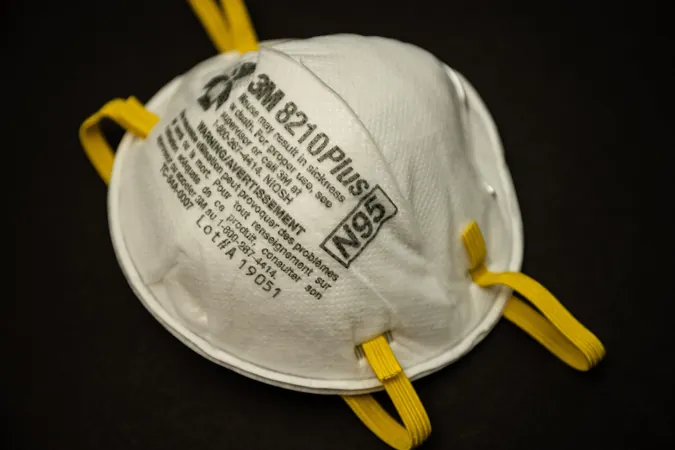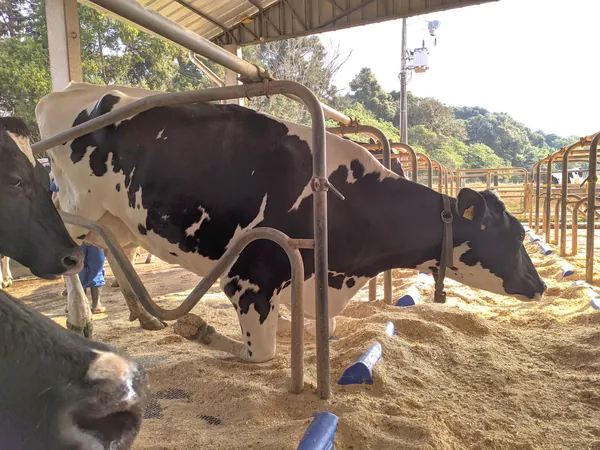
California Takes Swift Action Against Bird Flu While Scrutinizing Spending Amid Budget Concerns
2024-11-18
Author: John Tan
California Takes Swift Action Against Bird Flu While Scrutinizing Spending Amid Budget Concerns
In a proactive move against the rising threat of bird flu, California public health officials are utilizing a mix of state and federal stockpiles to provide essential protective gear to up to 10,000 farmworkers. This comes as the state acknowledges at least 21 confirmed human cases of the virus as of early November. The situation underscores the ongoing challenges California faces as it tries to bolster its preparedness in the face of significant budget deficits, currently estimated to be in the billions.
Officials began their distribution efforts in late May, long before the initial human case was reported, and have since ramped up collaborations with local health authorities. This careful strategy follows the detection of bird flu in cattle in the U.S. and its recent spread to over 270 dairies in central California. Alarmingly, the virus was also identified in commercial turkey flocks in Sacramento County and traced back to a wastewater sampling site in Los Angeles County.
California has made significant strides in applying lessons from the COVID-19 pandemic to its current public health strategy. These include enhanced coordination with local health officials and innovative tracking of disease through wastewater surveillance. According to Amy Palmer, spokesperson for the Governor's Office of Emergency Services, “We are far better prepared to respond to a pandemic than we were in 2020.”
Before the pandemic, California's emergency stockpile was limited to a capacity akin to just two basketball courts. A substantial buildup during the COVID crisis saw the stockpile expand to fill approximately 52 football fields. Currently, the supply fits in about 12.5 football fields but fluctuates based on needs and usage. Today, officials report having 101 million face masks on hand, which is significantly above the 90-day supply guideline.
Despite this apparent caution, health officials are currently facing scrutiny over California's ability to track the transmission of bird flu effectively. Comparisons to past administrations reveal a pattern of fluctuating preparedness. Notably, former Governor Arnold Schwarzenegger had initiated improvements to pandemic readiness back in 2006, but Governor Jerry Brown discontinued several key programs during fiscal instability in 2011.
Recent legislation mandates that hospitals maintain a three-month emergency supply of masks and other protective equipment. This requirement aims to mitigate the scenarios that played out during the COVID-19 outbreak, which saw healthcare workers using makeshift protective measures in the absence of adequate supplies.
As the state navigates these challenges, funding for public health initiatives remains a contentious issue. Despite pushback, California has reduced funding for personal protective equipment stockpiles by one-third, reflecting attempts to manage budget constraints. Furthermore, the elimination of funding for key logistical operations raises concerns about the state's long-term pandemic readiness.
A grassroots initiative aimed at boosting pandemic preparedness through increased taxation on high-income earners gained significant traction, gathering over a million signatures. However, the movement faltered following the legal troubles of a major financial backer, prompting officials to redirect efforts towards enhancing existing precision medicine initiatives.
With the public health landscape continually evolving, California remains wary of potential new threats, including the worst-case scenario of human transmission from bird flu and other pathogens. Health officials urge vigilance, reminding citizens that despite current low transmission risk, preparation is paramount in the face of an unpredictable future.
In the wake of these developments, California is poised at a critical juncture, balancing immediate health needs and long-term strategic investments against a backdrop of budget concerns. As they look to the future, the state is determined to harness lessons learned and remain at the forefront of pandemic preparedness.





 Brasil (PT)
Brasil (PT)
 Canada (EN)
Canada (EN)
 Chile (ES)
Chile (ES)
 España (ES)
España (ES)
 France (FR)
France (FR)
 Hong Kong (EN)
Hong Kong (EN)
 Italia (IT)
Italia (IT)
 日本 (JA)
日本 (JA)
 Magyarország (HU)
Magyarország (HU)
 Norge (NO)
Norge (NO)
 Polska (PL)
Polska (PL)
 Schweiz (DE)
Schweiz (DE)
 Singapore (EN)
Singapore (EN)
 Sverige (SV)
Sverige (SV)
 Suomi (FI)
Suomi (FI)
 Türkiye (TR)
Türkiye (TR)